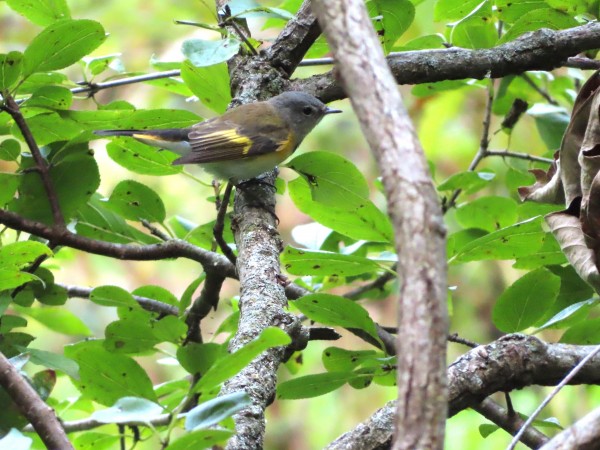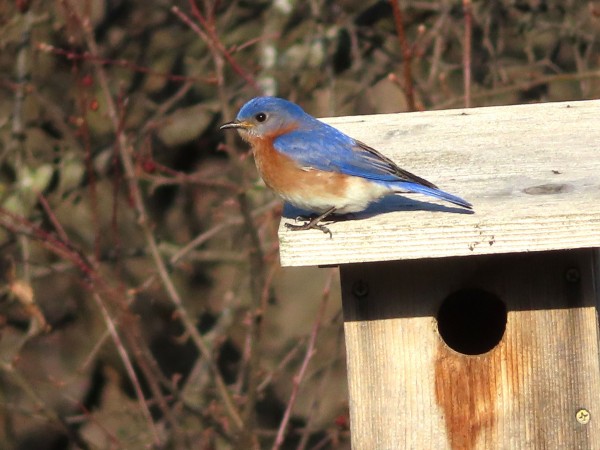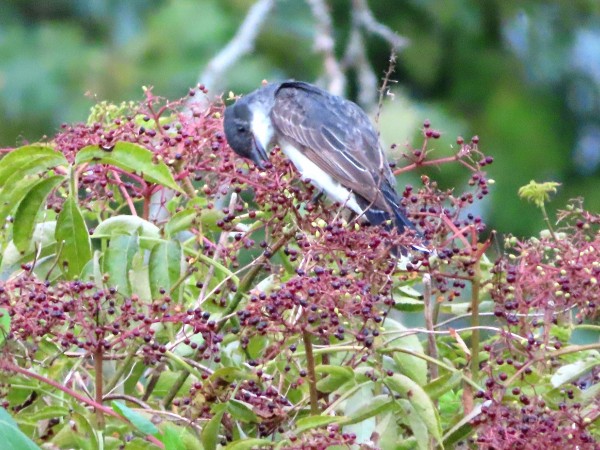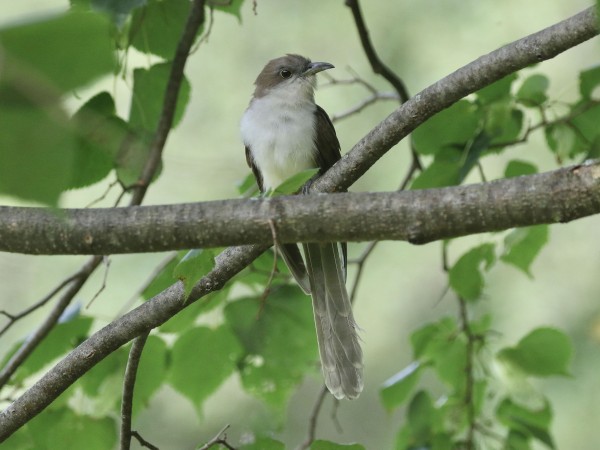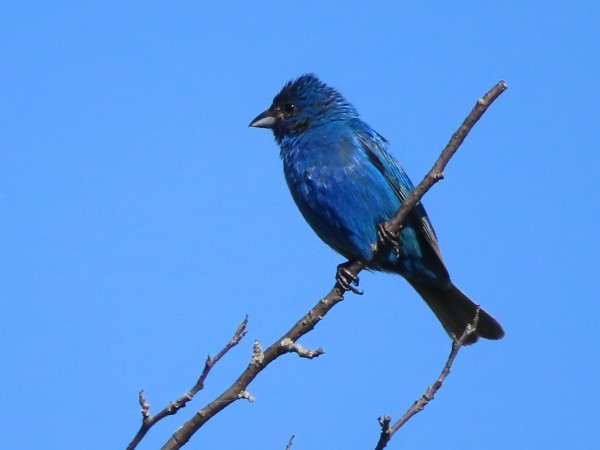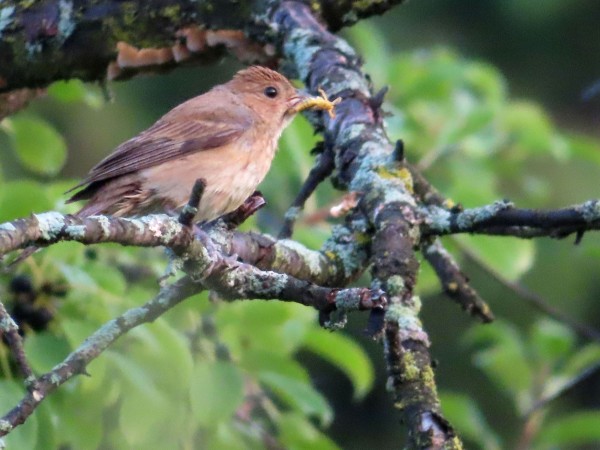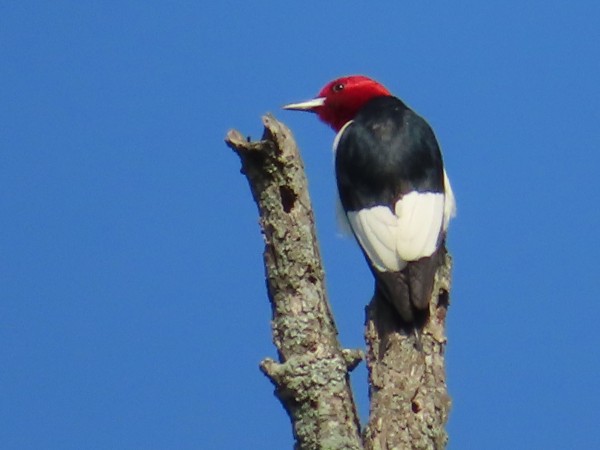Chuck's Birding Report #74
10 August - 16 August 2021
Dear fellow flock of birders,
Besides many of the wildflowers I’ve mentioned before there are a few new ones emerging and producing beautiful blooms. Three of them are producing yellow flowers. One is the Goldenrod and the most common among several species is the Canadian Goldenrod. Another is the Sunflower and a common one is the Saw-Tooth Sunflower. These are not the huge sunflowers grown in your garden or grown commercially. The flowers of these sunflowers are similar to the flowers of the Cup plant for example. The third new yellow wildflower is the Common Evening Primrose. In addition there is a light purple or lavender blooming wildflower, the Thistle. The native Thistle is a good one that is a favorite nectar producer for the Bees, Butterflies and Hummingbirds. When the flowers fade the seeds are favorites for American Goldfinches and other seed eaters. I was taught that the good Thistles have leaves whose undersides are white.
So what’s the news on the bird front this past week?
The most exciting is that warbler migration has begun and some of the early arrivals have been reported in the past couple days. A pair of birders reported seeing 7 species of warblers in Lake Kegonsa State Park. Will you be able to find about 20-30 species of warblers migrating through the Arb this fall? Identifying warblers in the fall is not easy. Instead of the colorful plumage of spring warblers who are trying to attract mates and protect breeding grounds, many but not all fall warblers have molted into a more drab plumage. Their aim is to make it to the wintering habitats farther south without being seen by predators. In order to identify the warblers you need to study their fall plumage carefully. Oh, and they don’t sing much in the fall either. Yesterday and today I did see both male and female American Redstarts. These may or may not have been migrants. Included are photos of the male and female American Redstarts. I got a one second view of another species of warbler but was unable to identify it. It moved much too quickly.
Sylvia Marek just sent me and few others her final report of the birds who used the 15 nest boxes in the Arboretum this spring and summer. Sylvia has been a steward of these boxes for 33 years. We all thank Sylvia for her dedication to this project! There was a lot of detail in the report but the bottom line was that 27 Eastern Bluebirds fledged, 27 Tree Swallows fledged and 24 House Wren fledged from the nest boxes. They are all done nesting for this year. In the next few months they all will migrate south. Included is a photo of a male Eastern Bluebird perched on a nest box.
The Eastern Kingbirds continue to migrate to the Arb. As I said previously they love to eat the many Elderberries that the Arb produces. I saw 9 Eastern Kingbirds today. They are such a sharp looking bird with a dark gray head and upperside and a white underside and tip of tail. I’ve included a photo of one eating an Elderberry.
As I walk on some of the narrower paths in the Arb many of the taller wildflowers hang over the paths. On early morning walks these plants are laden with dew. So like some of the birds I get leaf baths as the plants give up their dew to me. On the path in West Curtis Prairie the Big Bluestem grasses with their seed heads in the shape of turkey’s feet hang over the path. The seeds will eventually fall on the path and later in the months to come look for a variety of migrating sparrows feeding on the seeds on the path.
Last Tuesday near the end of our walk we stepped onto the east end of Longenecker Gardens. I told the group that over the past couple months I’ve occasionally heard a Yellow-billed Cuckoo make its ca-ca-ca-ca-ca call in this area. I never can find it, I just hear it vocalize. We stood waiting to hear it call but we heard nothing. All of a sudden one of the birders saw a bird that could have been it. I looked at it and said that’s it. It flew into a medium sized tree and seemed to be feeding as it moved around the tree. Three of us were trying to take photos of it. The best photos were taken by Jean Upton. We all assumed it was a Yellow-billed Cuckoo but when we got home and looked at our photos it wasn’t a yellow-billed but a Black-billed Cuckoo instead. We learned a lesson. We should have checked the bill closely instead of making an assumption. Jean Upton’s photo of the Black-billed Cuckoo is included.
I’ve raved about the Indigo Bunting numbers in the Arb this year. We often see 5, 6 and even 7 males in the Arb. We seldom see a female. If we do see a female she often hides quickly. Last week I got lucky and was able to get a photo of the female. Photos of both a male in all its deep blue glory and a female in all her cinnamon-colored disguise are included. This is a great example of sexual dimorphism.
Last week I mentioned that I’ve been seeing not only male Ruby-throated Hummingbirds but also females and juveniles. All we saw in spring and most of summer were males showing mostly black throats. They were perched at high vantage points ready to scare off intruders of their territories. Now after fledging young all are out and flying around. An example of a female with a white throat is attached.
My last photo is of a Red-headed Woodpecker. Its colors are striking. I did not see this bird in the Arb but still in Dane County.
That’s the bird report for this past week.
Good health to all of you and good birding too,
Chuck


